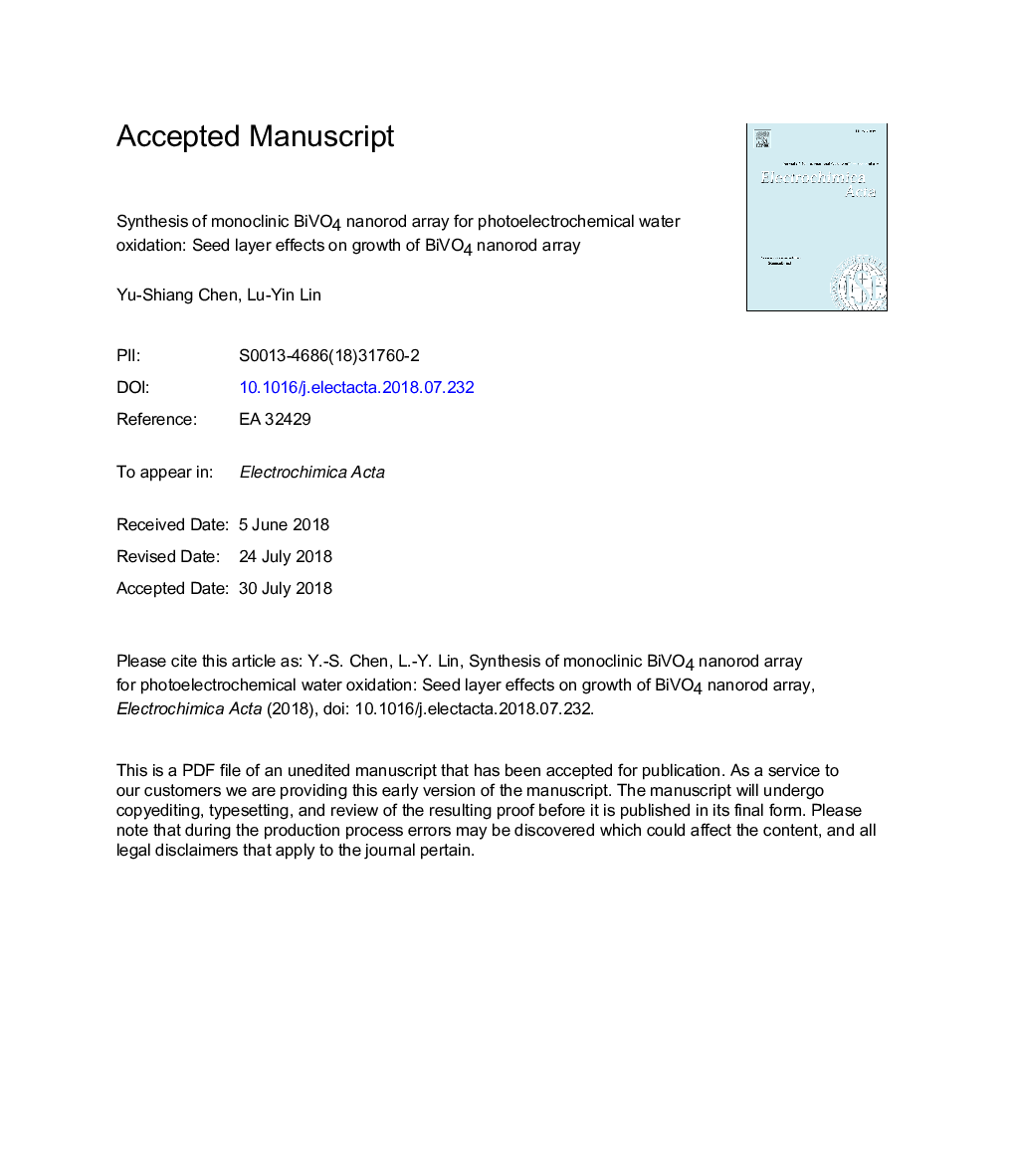| Article ID | Journal | Published Year | Pages | File Type |
|---|---|---|---|---|
| 6601800 | Electrochimica Acta | 2018 | 26 Pages |
Abstract
Bismuth vanadate is one of promising photocatalysts for water oxidation. Synthesizing bismuth vanadate nanorods is important to achieve efficient water oxidation with efficient carrier transport routes. Depositing the seed layer is necessary as the support for growing bismuth vanadate nanorods on the fluorine-doped tin oxide glass. Different configurations of seed layers are fabricated by spin-coating bismuth vanadate precursors on the fluorine-doped tin oxide glass and then drying the layers using different processes. The smallest onset potential of 0.57â¯V versus reversible hydrogen electrode and the highest photocurrent density of 0.39â¯mA/cm2 at 1.23â¯V versus reversible hydrogen electrode are obtained for the optimized bismuth vanadate electrode, which is prepared using the vacuum oven to dry the seed layer, under air mass 1.5 global illumination in the electrolyte containing 0.5â¯M sodium sulfate and 0.1â¯M phosphate buffer, due to the well-defined nanorod structure with the largest gaps in-between for more efficient light illumination, less charge recombination, and more effective electrolyte diffusion. The smallest charge-transfer resistance is also attained for the optimized bismuth vanadate electrode evaluated using the electrochemical impedance spectroscopy. The results provide an alternative way for designing the morphology of photocatalyst by carefully controlling the drying rate for making the seed layers.
Related Topics
Physical Sciences and Engineering
Chemical Engineering
Chemical Engineering (General)
Authors
Yu-Shiang Chen, Lu-Yin Lin,
